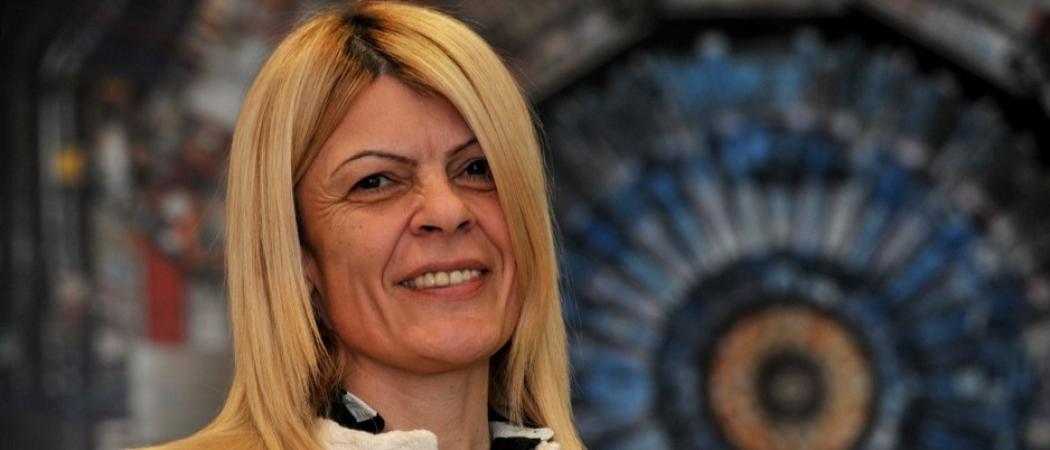A research infrastructure to advance the use of heavy ions in cancer therapy is ready to move forward. The EU now needs to put momentum behind the project, as part of a commitment to development of the Western Balkans and to bridge the east-west divide in science

Sanja Damjanovic, former science minister in Montenegro between 2016 and 2020
Research infrastructures have been shown to make powerful social and economic impacts and, as neutral, multinational ventures, to help in addressing global challenges under the banner of 'Science Diplomacy'.
The first concrete example was CERN in Geneva, initiated in 1949 to renew cooperation between warring countries and to reverse the brain drain caused by the second World War. Many more have followed in western Europe, but while the Western Balkans have had similar ambitions, around 70 years have passed without establishing any new large-scale research infrastructure based on new technologies in the region.
The reason for this loss of scientific and technological competitiveness is due to the recent history of the Western Balkans, notably the civil wars that raged from 1991 - 2000. As a consequence, all economic and scientific activities very much slowed down and ever since the region has suffered from an intense brain drain, prompting further economic loss.
A catalyst to shape science
The Western Balkans urgently need a catalyst to reverse this trend, by building research infrastructures based on the newest technologies.
In pursuit of this, in March 2017 the Western Balkans, through the government of Montenegro, officially initiated a pan-European research infrastructure for Cancer Therapy and Biomedical Research with protons and heavy ions, under the South East European International Institute for Sustainable Technologies (www.seeiits.eu).
As the minister of science of Montenegro at that time, I was appointed by the government to take the political lead. Based on 20 years of scientific research at CERN in Geneva and the GSI Helmholtz Centre for Heavy Ion Research in Darmstadt, I acted as a science diplomacy missionary, approaching 10 countries in south east Europe and getting their agreement to sign a declaration of intent at CERN in October 2017.
The SEEIIST project then became a regional grouping, an intergovernmental steering committee was formed, and I was appointed as the first chair.
During my mandate from 2017-2020, SEEIIST rose from a regional initiative to an international project on the pan-European roadmap. The project received recognition from the European Commission and the first €6.5 million for a design study, accompanied by strong support from major European players in the medical and associated scientific community.
Another political milestone was the signature of a memorandum of understanding by six prime ministers of the south east Europe region in 2019, at the 6th Summit of the Berlin Process in Poznan, Poland.
By 2020, SEEIIST was on its way to becoming part of the European Strategy Forum on Research Infrastructures (ESFRI) roadmap 2021, with Montenegro as the lead country, supported by 11 other countries and institutions, with CERN among them.
The first discussion on SEEIST being set up under the European Research Infrastructure Consortium (ERIC), the specific legal form that facilitates the establishment and operation of research infrastructures with European level interest, was initiated together with the Commission in November 2020.
In 2020, SEEIIST became one of the six leading EU-Western Balkans projects, and in December 2020, the project was the only research and medical infrastructure to became part of the €9 billion Economic and Investment Plan for the Western Balkans. This opened a route for SEEIIST to become a flagship project and to secure a large fraction of the €250 million needed for its construction.
SEEIIST has roots
In early 2021, new management of the SEEIIST steering committee was appointed. Meanwhile, the EU Horizon 2020 research programme project, Heavy Ion Therapy Research Integration (HITRIplus), received €5 million from the Commission in 2020 for a SEEIIST compact design. That work is ongoing.
As president of the general assembly of the HITRIplus Project, I can express my satisfaction with its mission of bringing together the key research infrastructures for biophysics and medical research on cancer treatment with heavy ion beams from across Europe. A total of 18 European research institutions and clinics, among them CERN, GSI Darmstadt and the four existing ion therapy clinics, are working together for the first time with the common goal of advancing the state of the art of medical accelerators and opening up the use of heavy ions in targeted cancer therapy.
However, the momentum behind SEEIIIST, which stands to make an important contribution to research into cancer therapy with heavy ions, has slowed. The current weakness can in the first place be attributed to the lack of a strong political lead, with SEEIIST not featuring in high-level political events organised by the EU. As a consequence, SEEIIST has not received any additional financial support since 2020.
On top of that, the Economic and Investment Plan for the Western Balkans lies dormant and has so far not been brought up as a top priority by the governments.
The ERIC model is the correct option for the SEEIIST legal entity, while CERN convention elements could only be integrated under the ERIC model. The original role of the Swiss Federal Department of Foreign Affairs in providing a neutral platform for forthcoming decisions, such as selecting the site for SEEIIST and laying out the science diplomacy roadmap, has later expanded to the organisation of too many technical working groups, based on purely bureaucratic rather than international scientific grounds.
The SEEIIST project has set down its roots. However, in order to deliver on the bright perspectives developed over the last five years, we need to properly connect, rather than to split previously developed international teams with their high-level experience. A clear vision for the common implementation of the SEEIIST roadmap and to move towards the next stage of preparations and the construction phase, together with the European Commission, is of utmost importance for the future.
All of us in Europe, whether politicians, scientists or citizens, should do everything to assure SEEIIST is realised and can make its home in the Western Balkans. The region deserves this not only as the initiator of the project, but also after patiently waiting over 70 years for a large scale research infrastructure.





 A unique international forum for public research organisations and companies to connect their external engagement with strategic interests around their R&D system.
A unique international forum for public research organisations and companies to connect their external engagement with strategic interests around their R&D system.